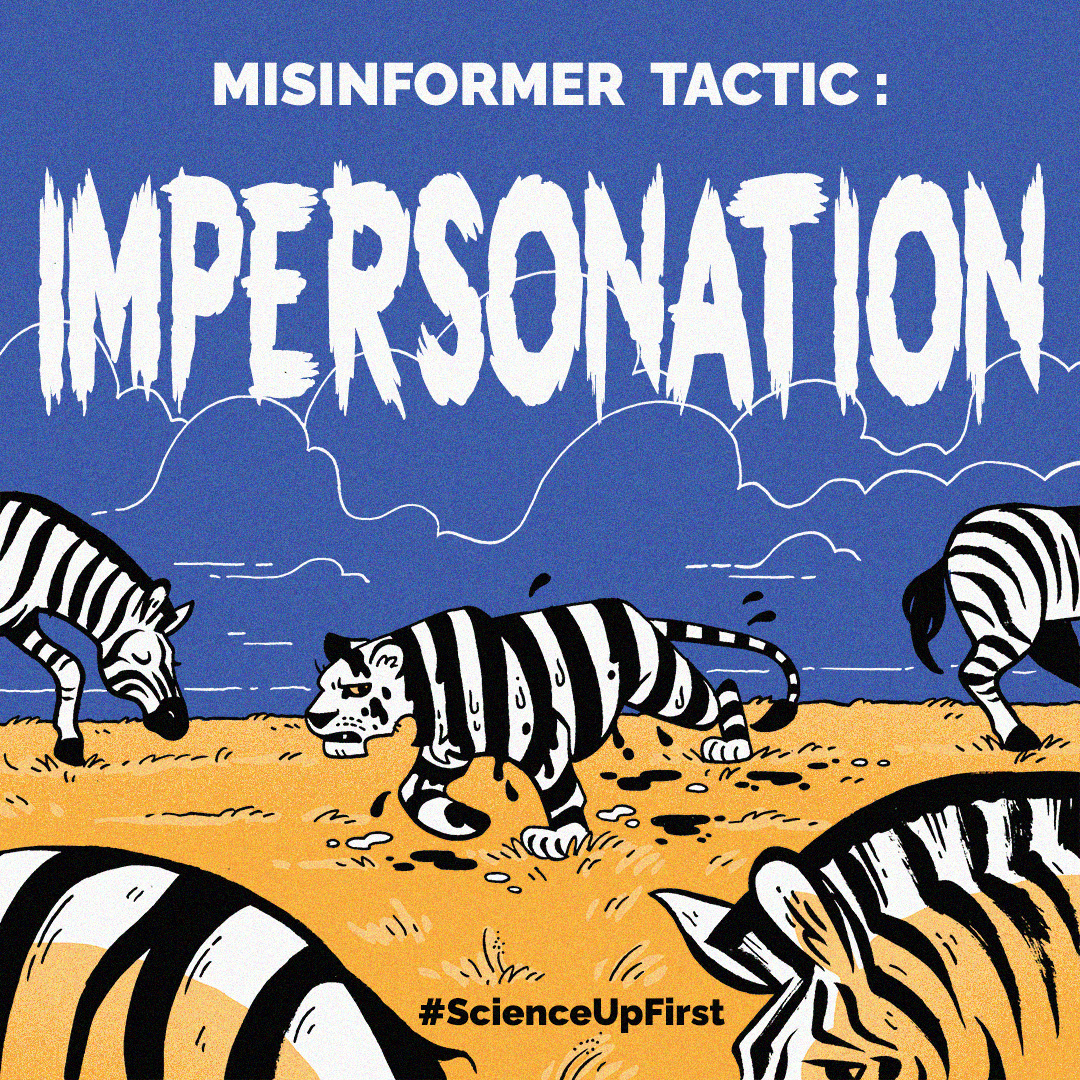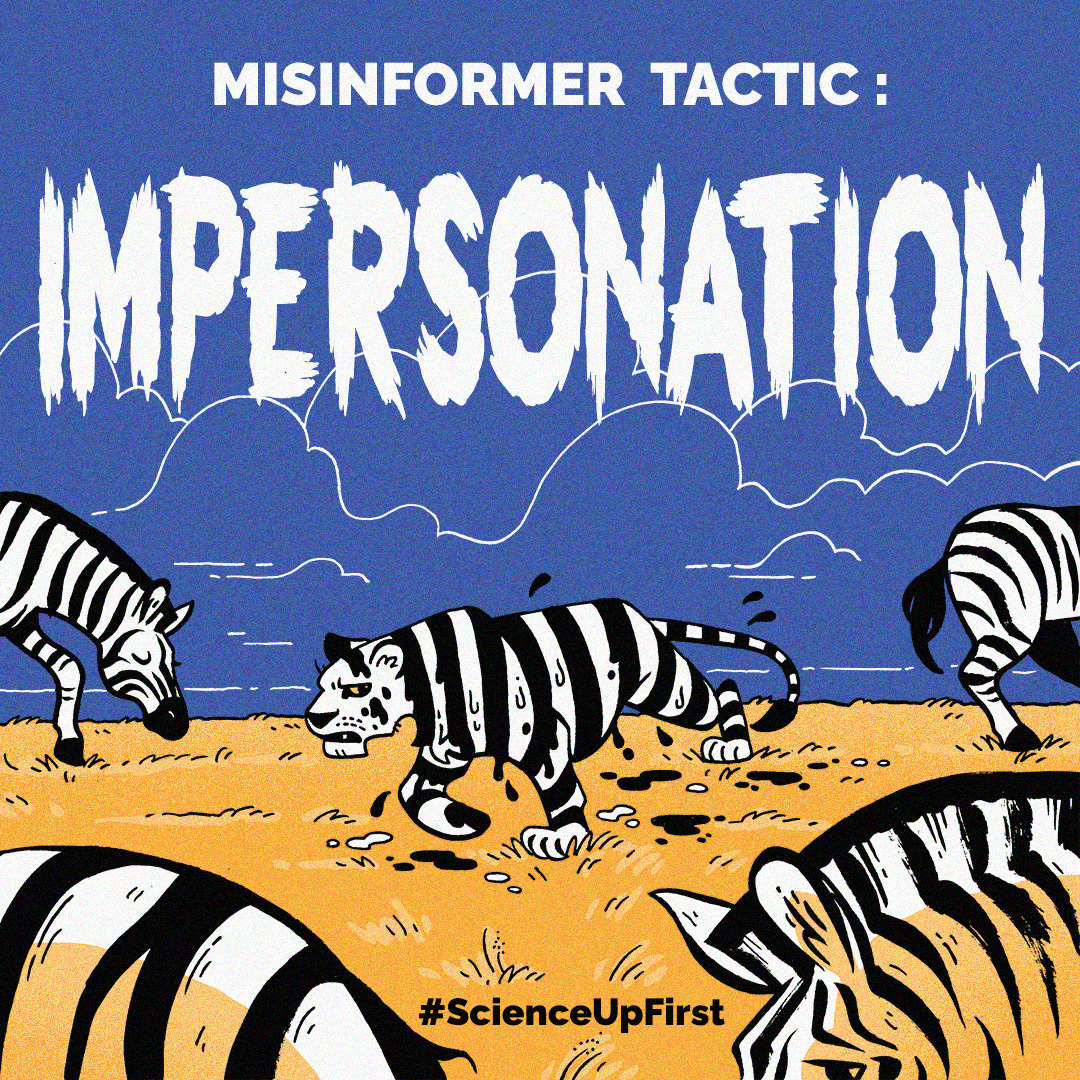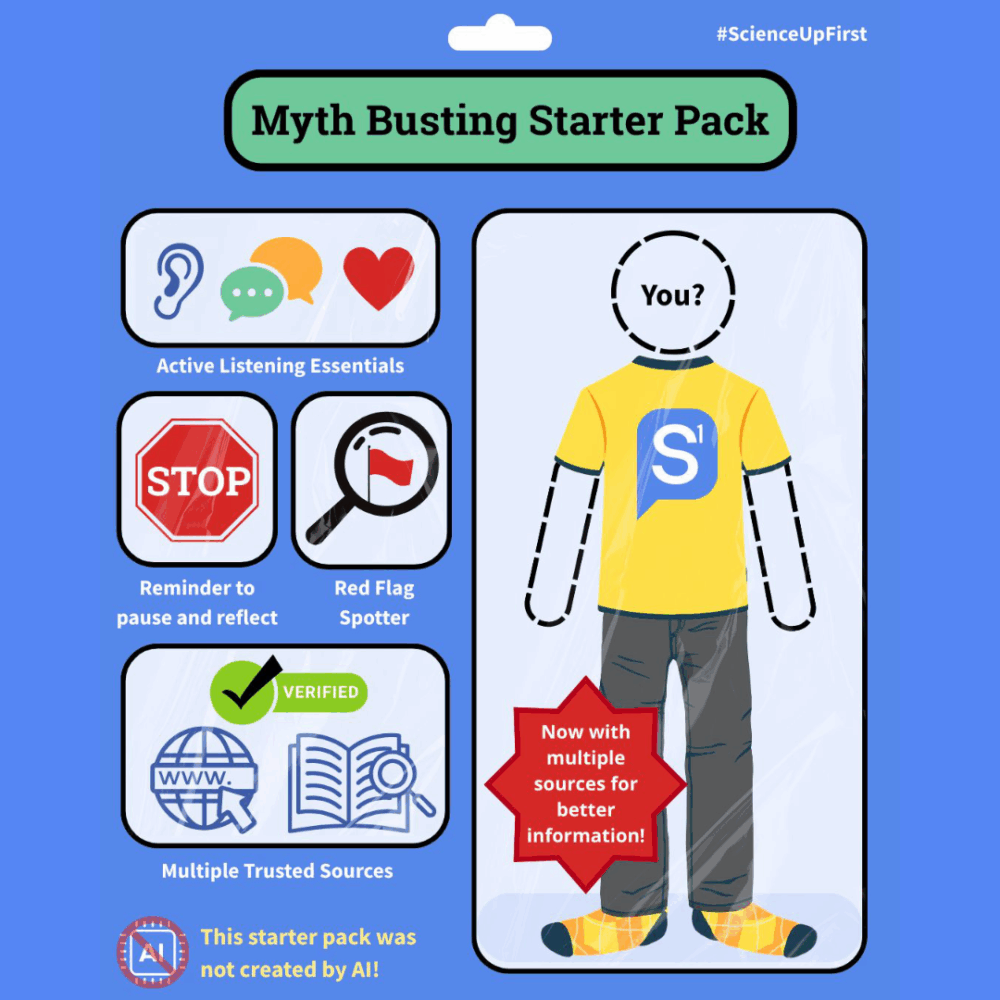
You know what they say… beware of wolves in sheep’s clothing… or lions in zebra stripes.
Or… accounts that share antivax content using blue and yellow graphics and the hashtag #ScienceUpFirst. Clearly they’re trying to capitalize on the trust we’ve built with our colours and style.
A common tactic used by misinformers and scam artists is to appear legit by putting on the trappings of real information sources.
It’s a versatile and effective tactic. Here are some things to watch out for:
- When an account uses misleading, emotive names and hashtags that include phrases like “truth” and “freedom”
- Overusing scientific jargon incorrectly to appear well-informed. For example, “The quantum interference of neural antibodies coagulates the blood serum, leading to antibody rejection and histocompatibility errors.”
- Hijacking existing hashtags like #NIAW2022 or #ScienceUpFirst to gain visibility.
- Using similar URLs or account names that could be easily mistyped.
Want to learn more?
Check out Get Bad News, a game developed by researchers in the UK and Sweden that lets you try your hand at being an impostor online: https://getbadnews.com
Evaluations of the game show that learning about these tactics with fake examples actually innoculates you against the real thing: https://tinyurl.com/SUFBadNews
Thanks to Jordan Collver for collaborating with us on this post. Jordan is an illustrator and science communicator specializing in using the visual and narrative power of comics to explore themes of science, nature, and belief.
Check out his work on his website and on Twitter.
Share our original Tweet!
You know what they say, beware of wolves in sheep’s clothing.
— ScienceUpFirst | LaScienced'Abord (@ScienceUpFirst) May 19, 2022
Or… antivax accounts that share content w/ our hashtag and blue/yellow graphics, trying to capitalize on the trust we’ve built with our style #ScienceUpFirst
[1/7] pic.twitter.com/fgfAOfKu9X
View our original Instagram Post!




